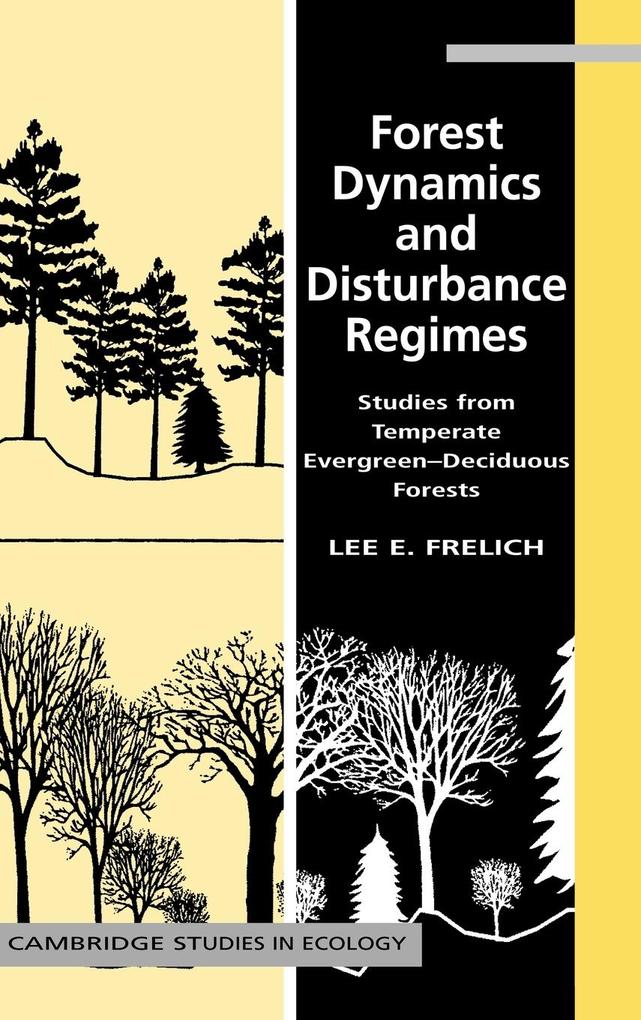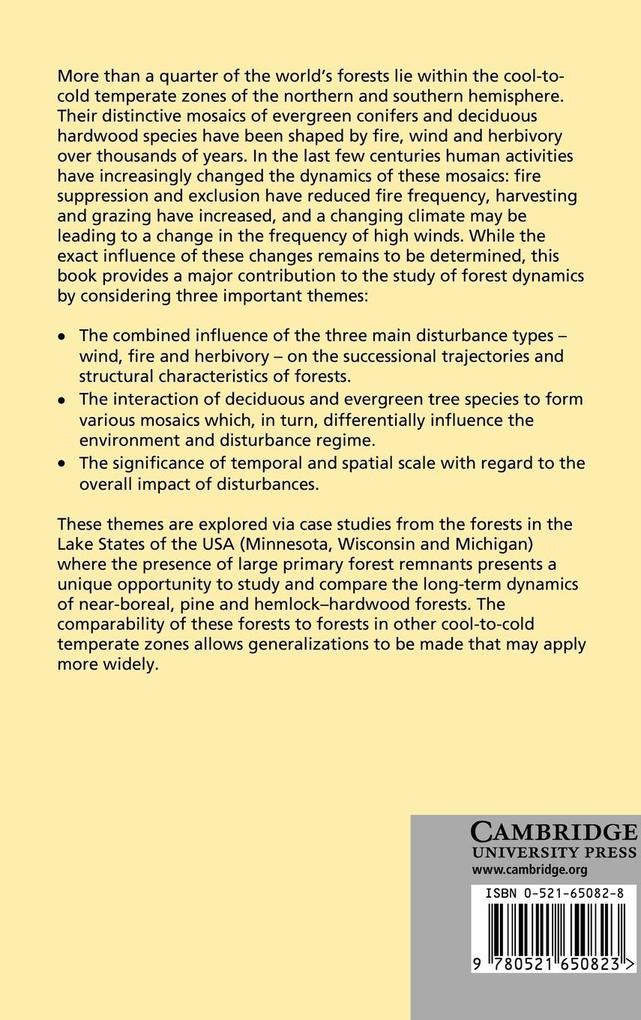
Zustellung: Fr, 25.07. - Di, 29.07.
Versand in 7 Tagen
VersandkostenfreiBestellen & in Filiale abholen:
Lee Frelich provides a major contribution to the study of temperate-zone forest dynamics by considering three important themes: the combined influence of wind, fire, and herbivory on the successional trajectories and structural characteristics of forests; the interaction of deciduous and evergreen tree species to form mosiacs; and the significance of temporal and spatial scale with regard to the overall impact of disturbances. These themes are explored via case studies from the forests in the Lake States of Minnesota, Wisconsin and Michigan, where the presence of large primary forest remnants provides a unique opportunity to study the long-term dynamics of near-boreal, pine, and hardwood-hemlock forests.
Inhaltsverzeichnis
Preface; Acknowledgements; 1. The forest setting; 2. The disturbance regime and its components; 3. Sampling and interpretation of stand disturbance history; 4. Disturbance, stand development, and successional trajectories; 5. The study of disturbance and landscape structure; 6. The disturbance regime and landscape structure; 7. Disturbance in fragmented landscapes; 8. Forest stability over time and space; References; Appendix I; Index.
Produktdetails
Erscheinungsdatum
27. Mai 2006
Sprache
englisch
Seitenanzahl
280
Autor/Autorin
Lee E. Frelich
Herausgegeben von
H. J. B. Birks, J. A. Wiens
Verlag/Hersteller
Produktart
gebunden
Gewicht
609 g
Größe (L/B/H)
235/157/21 mm
ISBN
9780521650823
Entdecken Sie mehr
Pressestimmen
'... easy to read and a helpful synthesis of a broad range of topics relating to disturbance, forest dynamics, and succession.' Journal of Vegetation Science
Bewertungen
0 Bewertungen
Es wurden noch keine Bewertungen abgegeben. Schreiben Sie die erste Bewertung zu "Forest Dynamics and Disturbance Regimes" und helfen Sie damit anderen bei der Kaufentscheidung.










